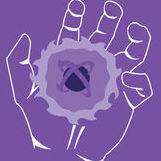Realistic Weapons
Any tool is a weapon if it is held correctly I am currently in the process of designing the weapons for a game that is oriented around weapons such as firearms and various hand to hand weaponry. The weapons are meant to be realistic and modern; modern in the sense that they are found commonly in civilian areas. I have come across a few problems however. The first and major problem I came across was a lack of knowledge about firearms in general, not being a major fan of having them around my house. I would be grateful if someone could give me a good website or two that had some comprehensive information, because my research has been, to say the least, haphazard. The second problem might stem from my first. From what I could gather about firearms it seems that in order to balance the game I would need to sacrifice realism. I am unsure that any liberties taken could bring heavy critisizm upon the game, has anyone had any experience in having that happen or any possible solutions? At this point I have two options that I have thought of. Either I do some more heavy research and possibly sacrifice realism in certain aspects or I forget real weapons and create my own plausible yet fake weapons that I can tweak and balance to my hearts content. Both options will take approximately the same amount of time. Which would be preferred by the public though, familiar yet changed firearms, or completely made up yet perfectly balanced firearms? TL;DR version: Is it ok to completely design from scratch your own perfectly balanced firearms or do people prefer to see familiar firearms which may be slightly modified for balance in the game.
------------George Gough
Firstly you might want to design your own weapons to avoid copyright issues because the real weapons names and appearance are intellectual property of their manufactures.
Secondly I generally believe you should sacrifice realism for gameplay unless a realistic simulation is your primary selling point.
Secondly I generally believe you should sacrifice realism for gameplay unless a realistic simulation is your primary selling point.
I have to completely agree with Kaze on this one. The copy rights would be an issue, and it's a good challenge to make your own. I would suggest trying to play paintball or something first, if you haven't already, so you can at least have a basic understanding of what's good and what's annoying about the design of some guns.
The big thing you brought up though is the realism factor. What I try to keep in mind is that yeah, realism is nice to a point, but we are playing a game, and the rules can be broken a bit for the sake of better gameplay.
The big thing you brought up though is the realism factor. What I try to keep in mind is that yeah, realism is nice to a point, but we are playing a game, and the rules can be broken a bit for the sake of better gameplay.
Go to a pistol range and rent a few pistols. Take the basic 30 minute training course they give and fire off 50 rounds through 2-3 different guns. Then go home and research those particular guns. That will be a good starting point for further reading.
--------------------------I present for tribute this haiku:Inane Ravings OfThe Haunting JubilationA Mad Engineer©Copyright 2005 ExtrariusAll Rights Reserved
Honestly, a firearm is a firearm. The differences between types will be mostly cosmetic. Yeah, you'll have fire rates and..well...fire rates. The damage characteristics will come from the ammunition used; unless you want to make reliabilty a factor.
Thanks for all of the insight. I actually took some of the advice and have begun designing my weapons. Now if only there was a program to generate them for me.
------------George Gough
haha, if you find a program that can generate them for you, you tell me, cause that'd be a nice program to have.
Research will take ages, and you'll still wind up with some wrong ideas, no matter how hard you work. "Experts", including police officers, military personnel, prolific authors and gunsmiths, will spout total nonsense at least half the time.
With that out of the way, here's my essentially worthless perspective on the matter:
1. The guns themselves are virtually irrelevant. The guy holding the gun, his training, his natural instinct for fighting and the situation at the start of the fight are a bajillion times more important than whether he's packing a 9mm Glock or a .44 Magnum S&W or a .25 Beretta.
2. "Stopping power" from a handgun is generally a myth. Unless you're talking about the kind of handguns that you might hunt deer with, and unless those big guns hit a major bone, the kinetic impact of the bullet is negligible. Fast rounds go through a person and slow rounds get stuck in them, but the "hit" of the bullet won't knock anyone down. Shock, fear and maybe pain will have an almost immediate effect, but it's highly dependent on the person getting shot. Pistol wounds kill people slowly, with blood loss, organ damage and shock, which takes a few minutes usually. Maybe they're unconscious while they bleed, maybe they're stabbing you. Long guns are a different story, but still a complex one.
3. Guns are super hard to use well. Handguns are tiny, have small sights close together and can't be precise unless you're awesome. Big guns are heavy, and clumsy, and inconceivably loud. If you get a chance at the range, fire a gun once (and only once) without your hearing protection. It will mess you up. My .357 is so loud that if I shoot it without my muffs on my hearing is affected for several minutes afterward. In a dark room, it's like a bomb going off in your hand: You're blind and deaf for a good ten seconds, and it takes minutes to get your night vision back and stop the ringing in your ears.
Sacrifice realism. Realism sucks. Unless you're going to accurately model psychology and physiology for everyone in the situation, you'll never get "realism" in a gunfight, and without that, a gun's basically a gun. Work it out with HP and have rate-of-fire and reticle bloom and magazine capacity govern your performance. Making your own guns up will allow you to customize them to serve gameplay, and that's the most important thing, if you ask me.
With that out of the way, here's my essentially worthless perspective on the matter:
1. The guns themselves are virtually irrelevant. The guy holding the gun, his training, his natural instinct for fighting and the situation at the start of the fight are a bajillion times more important than whether he's packing a 9mm Glock or a .44 Magnum S&W or a .25 Beretta.
2. "Stopping power" from a handgun is generally a myth. Unless you're talking about the kind of handguns that you might hunt deer with, and unless those big guns hit a major bone, the kinetic impact of the bullet is negligible. Fast rounds go through a person and slow rounds get stuck in them, but the "hit" of the bullet won't knock anyone down. Shock, fear and maybe pain will have an almost immediate effect, but it's highly dependent on the person getting shot. Pistol wounds kill people slowly, with blood loss, organ damage and shock, which takes a few minutes usually. Maybe they're unconscious while they bleed, maybe they're stabbing you. Long guns are a different story, but still a complex one.
3. Guns are super hard to use well. Handguns are tiny, have small sights close together and can't be precise unless you're awesome. Big guns are heavy, and clumsy, and inconceivably loud. If you get a chance at the range, fire a gun once (and only once) without your hearing protection. It will mess you up. My .357 is so loud that if I shoot it without my muffs on my hearing is affected for several minutes afterward. In a dark room, it's like a bomb going off in your hand: You're blind and deaf for a good ten seconds, and it takes minutes to get your night vision back and stop the ringing in your ears.
Sacrifice realism. Realism sucks. Unless you're going to accurately model psychology and physiology for everyone in the situation, you'll never get "realism" in a gunfight, and without that, a gun's basically a gun. Work it out with HP and have rate-of-fire and reticle bloom and magazine capacity govern your performance. Making your own guns up will allow you to customize them to serve gameplay, and that's the most important thing, if you ask me.
Modern Firearms has a fairly comprehensive list with lots of background information and pictures, but the site design is a little... interesting. Navigation is a little goofy, but there's tons of info.
For more creative design inspiration, deviantART.com has several artists who specialize in cool guns (which vary in realism).
For more creative design inspiration, deviantART.com has several artists who specialize in cool guns (which vary in realism).
-Mark the Artist
Digital Art and Technical Design
Developer Journal
First off, a pistol bullet does not "kill slowly". Not does it kill quickly. The ability of a bullet fired from a gun to kill is dependent on where it hits. A .30-06 in the foot might cripple the guy, but unless he lies there until he bleeds to death and does nothing, it won't necessarily kill him. A .22LR to the heart or brain stem will kill instantly.
No weapon kills either slowly or quickly. They kill according to how they are used.
Also, different guns have different ranges, accuracy, amounts of felt recoil, and yes; the amount of kinetic energy even between different guns of the same caliber (even using the same bullet) are different. Two M1 Garands can vary considerably in their groupings. So can any other gun. Two .30-06 likewise can vary even more. Longer barrels, different twist rates in the rifling, whether the barrel is free floating or not; even materials used in the barrel and stock affect everything.
Even the use of a bayonet can alter a gun's accuracy. An M44 Mosin-Nagant is sighted in using it's Bayonet; remove that and it will shoot off the mark.
The bullet types themselves can alter how they damage a person. A .303 British round in later years was designed to tumble on impact, creating a buzzsaw which tore through the person. A hollowpoint bullet is designed to mushroom more effectively on impact, causing more tissue damage.
Most of the damage done is via hydrostatic shock; the energy ripples out around the wound, damaging surrounding tissues. I could go on a long while about different bullet designs, and the damage they do. To shorten it; EVERY caliber of EVERY gun can easily kill a person. In a single shot, instantly. All they need to become deadly weapons, is a human being to load and aim them and pull the trigger.
Now, as for a game, you don't need all that. You really should sacrifice realism for game-play. IMO, that's always the case. There are times when realism improves gameplay, racing games for example. Shooters, no.
I would just design my own; use varying amounts of bullet dispersion and differing power levels to differentiate between gun classes. If you want to get fancy, have it lose damage at longer ranges. Not really necessary though. Most games don't have the kinds of range needed for that.
No weapon kills either slowly or quickly. They kill according to how they are used.
Also, different guns have different ranges, accuracy, amounts of felt recoil, and yes; the amount of kinetic energy even between different guns of the same caliber (even using the same bullet) are different. Two M1 Garands can vary considerably in their groupings. So can any other gun. Two .30-06 likewise can vary even more. Longer barrels, different twist rates in the rifling, whether the barrel is free floating or not; even materials used in the barrel and stock affect everything.
Even the use of a bayonet can alter a gun's accuracy. An M44 Mosin-Nagant is sighted in using it's Bayonet; remove that and it will shoot off the mark.
The bullet types themselves can alter how they damage a person. A .303 British round in later years was designed to tumble on impact, creating a buzzsaw which tore through the person. A hollowpoint bullet is designed to mushroom more effectively on impact, causing more tissue damage.
Most of the damage done is via hydrostatic shock; the energy ripples out around the wound, damaging surrounding tissues. I could go on a long while about different bullet designs, and the damage they do. To shorten it; EVERY caliber of EVERY gun can easily kill a person. In a single shot, instantly. All they need to become deadly weapons, is a human being to load and aim them and pull the trigger.
Now, as for a game, you don't need all that. You really should sacrifice realism for game-play. IMO, that's always the case. There are times when realism improves gameplay, racing games for example. Shooters, no.
I would just design my own; use varying amounts of bullet dispersion and differing power levels to differentiate between gun classes. If you want to get fancy, have it lose damage at longer ranges. Not really necessary though. Most games don't have the kinds of range needed for that.
This topic is closed to new replies.
Advertisement
Popular Topics
Advertisement
Recommended Tutorials
Advertisement








